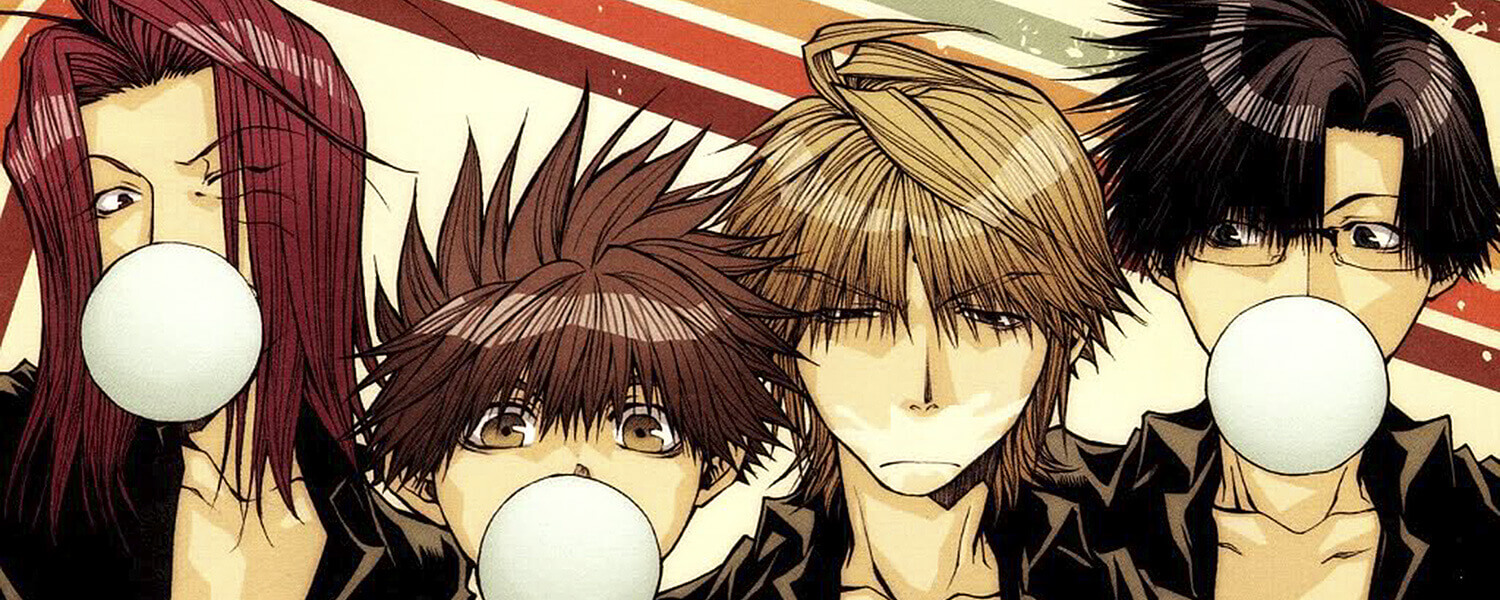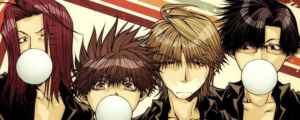KWEH!
It will soon be the Year of the Monkey so for all you tree-swinging primates out there, this is your year! Speaking of monkey, one of the most famous monkeys of all time is Sun Wukong from the Chinese classic Journey to the West (西遊記 Xī Yóu Jì). However, Kazuya Minekura’s Saiyuki has its own takes on the story, the four main characters, and the dragon. Let’s compare Minekura’s characters and the originals, shall we?
History of Minekura’s Saiyuki
Saiyuki (最遊記 literally, Journey to the Extreme) started as a manga in 1997. In 1999, Tokyo Kids released a two-episode Original Video Animation and it proved to be popular. Minekura continued penning the manga and other anime studios created the animated series.
Fans of the series know that Saiyuki attracted a diverse demographic. Though it was geared towards the shounen population, girls also read them because there are handsome, I mean, great characters.
Aside from anime and manga, the series also spawned a live-action musical and a few video games for different consoles.
Note on the name: Minekura’s Saiyuki is homophonous to the Japanese pronunciation of 西遊記 (Journey to the West). A pun, no joke.
Minekura herself is among the great women manga artists who wrote for the shounen demographic, which we wrote about on the site here.
Overall Story Differences
Journey to the West has been adapted and retold many, many times throughout the centuries. The popular and “correct” version right now is probably not the closest to the first telling. Minekura adapted the story by having the four (plus one jeep-dragon) protagonists travel west to prevent the resurrection of Ox-Demon-King.
Just like the original JttW, there are many trials along the way. The four guys must also face their tragic and traumatic pasts together.
Saiyuki is a more violent, psychological, darker, traumatizing, and gritty adaptation. It is also one that includes a mishmash of modern technology, magic, and religious motifs.
The Monkey
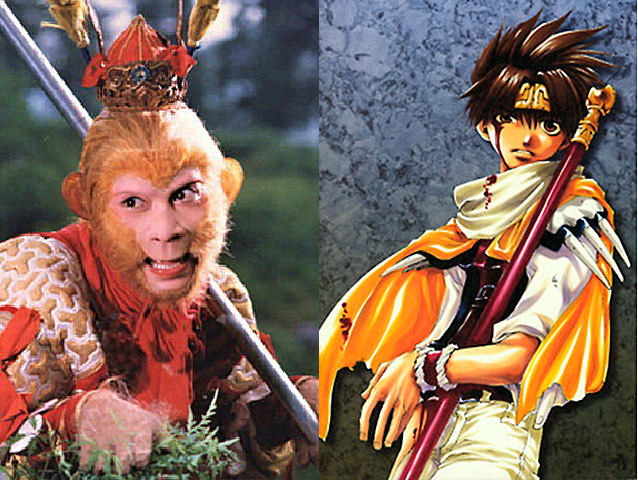
Sun Wukong (literally Sun, a Chinese surname, Aware of Emptiness), or Son Goku, is the main character in the original Chinese classic. However, Saiyuki has toned his prominence down and spread its attention among the four more evenly.
As with JttW, Goku is mischievous and very strong. The demons in the original classic often underestimated Wukong because of his small and skinny stature. Of course, most of them will eat their own words once the fights start. Minekura uses a similar idea and portrays Goku as child-like both in personality and in physical appearance.
The Great Monkey is matchless in both stories. Goku, however, can turn to a violent and ruthless demon in Saiyuki. While in the classic Wukong only injured the deities in Heaven, Goku massacred thousands of heavenly residents.
Once in a while, we are reminded of his tragic past through flashbacks. Though in the story, his memory is sealed away, Goku always seems to carry that burden. Once his coronet power limiter is removed and his demonic form takes over, he is easily the strongest and most merciless character in the entire series.
The Monk
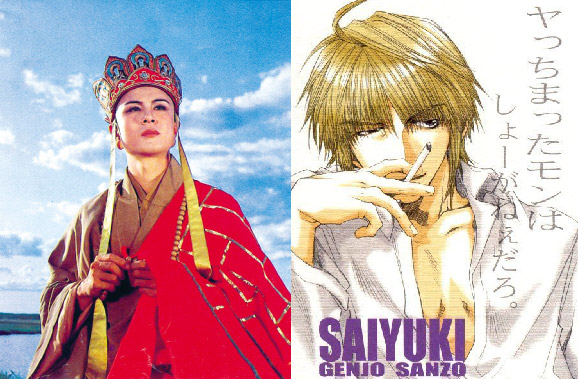
Xuanzhang or also known as Tang Sanzang (referring to a monk from Tang Dynasty looking for Three Collections of Buddhist Scriptures) is the second most prominent character in the classic. He is known as Genjo Sanzo in Saiyuki.
Sanzang is known to be a timid, just, devout Buddhist, and polite but very rigid individual in JttW. He is often the target of many demons that heard consuming his flesh would grant immortality. Sorry you lot, that is just a rumor.
Sanzo is far different than the original monk. Though a practicing Buddhist monk, Sanzo drinks alcohol, does not shave his head (same goes for some other monks in the series by the way), smokes heavily, gets irritated easily, has a violent streak, and swears often. Oh, he also carries a small revolver that brandishs at a whim as well as being an adept martial artist.
In Saiyuki, Sanzo is a reincarnation of a heavenly deity named Konzen Douji, the nephew of Kanzeon Bosatsu (Goddess of Mercy). However, Konzen Douji was a different person in the original source.
Saiyuki also portrays the relationship between Sanzo and Goku differently. While the classic depicts Sanzang and Wukong as master and disciple, Saiyuki’s Sanzo and Goku are more like father/big brother and son/younger brother categories.
The Pig
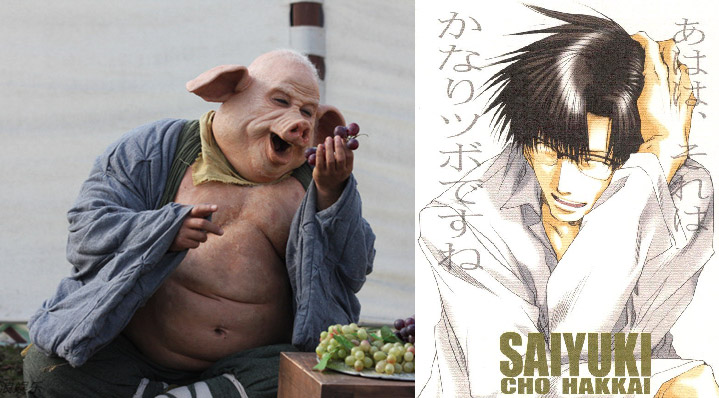
Zhu Bajie (literally Pig of the Eight Restraints) is the second most powerful fighter in the Xuanzhang’s entourage and third most prominent character. In Saiyuki, his name is pronounced Cho Hakkai.
Quick note before we move on: Saiyuki switches some of the personalities of The Pig and The Sand Priest into Sha Gojyo and Cho Hakkai respectively. You will see what I mean.
The main similarity between Bajie and Hakkai is both are fallen Heavenly marshals who later reincarnate.
The differences though, are quite staggering. Bajie is lustful, greedy, gluttonous, lazy, arrogant, jealous, and not very bright. Wow, that is six out of the Seven Deadly Sins. Other variations of the classic says that Bajie is quick to anger, making him the complete embodiment of the Sins.
Hakkai is the opposite. He is reserved, intelligent, great at cooking, cleaning, and has an “interesting” sense of humor. Hakkai found Jeep (the name of the jeep-dragon who also goes by Hakuryuu) some time before the journey start and have been together since. Unlike Bajie, Hakkai’s past after being reincarnated is a gruesome one.
Bajie’s life after reincarnation (at least the more popular version) is rather tame: he was born from a sow, notified by the Goddess of Mercy to accompany Sanzang, grew up to be a strong man, married into a family, slowly turned into a boar demon, indulged in worldly desires, was subdued by Wukong, and joined the group.
Hakkai on the other hand, grew up an orphan, fell in love with with a woman, and lived together with her.
Hakkai and the woman also seemed to ignore the fact that they are siblings.
That is not the entirety of Hakkai’s backstory. Suffice to say Saiyuki spends a lot more time fleshing out Hakkai and Sha Gojyo’s background.
The Sand Priest
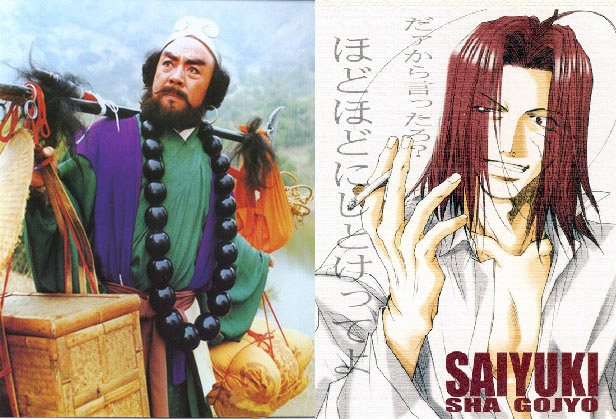
Among the four leading figures, Sha Wujing (literally Sand Aware of Purity) has the least character development and is the weakest fighter. Despite that, Wujing is very loyal, hardworking, polite, and logical.
Known as Sha Gojyo in Saiyuki, he is the rowdiest of the bunch, especially when paired up with Goku. He is a known womanizer, indulges in vanity, and is the most intimidating looking of the bunch.
Gojyo and Wujing are also reincarnated beings in their respective stories.
Gojyo’s red hair happens because he is a half-human, half-demon breed. Similar to his best friend, Hakkai, his past was tragic.
Gojyo was forced to live on the street since young. It was during one of those wandering years Gojyo met Hakkai. They became very good friends because they can sense and understand each other’s troubled pasts.
As you can see, many traits of the Bajie are transferred to Gojyo and Wujing to Hakkai.
The Dragon
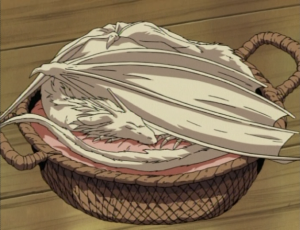
Last but not least, The White Dragon Horse, or in Saiyuki‘s case, The White Dragon Jeep.
In JttW, he was actually a dragon prince who accidentally destroyed a very precious gift. Before he was to be executed, the Goddess of Mercy asked for his service in aiding Sanzang. He was then banished into a river to wait for Sanzang. After a brief skirmish and misunderstanding between Sanzang’s party and the dragon, the Goddess of Mercy came to straighten things out. The dragon prince was turned into a white horse for Sanzang to ride on through the entire journey.
Jeep, the small white dragon, was found by Hakkai during Hakkai’s stay with Gojyo. Jeep bonded quickly with Hakkai but less so with Gojyo. Though they seem to have some understanding and tolerance with each other because of their impure heritages. Jeep was a result of a taboo experiment combining magic and science similar to Gojyo’s half-breed blood.
In the later part of the anime, he is called Hakuryuu (White Dragon) instead of Jeep to avoid legal issues.
There you have it. There are a lot of details that I have skipped because both Journey to the West and Saiyuki are quite lengthy in their own ways.
Are you celebrating the Chinese/Lunar New Year? Are you a monkey too? Let’s us know in the comments below!
Sources: TV Tropes, Wikipedia (Journey to the West characters), and Saiyuki Wikia

Featured Sponsor - JAST
The sweetest romance and the darkest corruption, the biggest titles and the indie darlings; for visual novels and eroge, there's nowhere better.
Big thank you to our supporters
From their continous support, we are able to pay our team for their time and hard work on the site.
We have a Thank-You page dedicated to those who help us continue the work that we’ve been doing.
See our thank you page